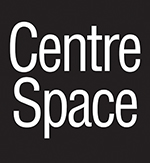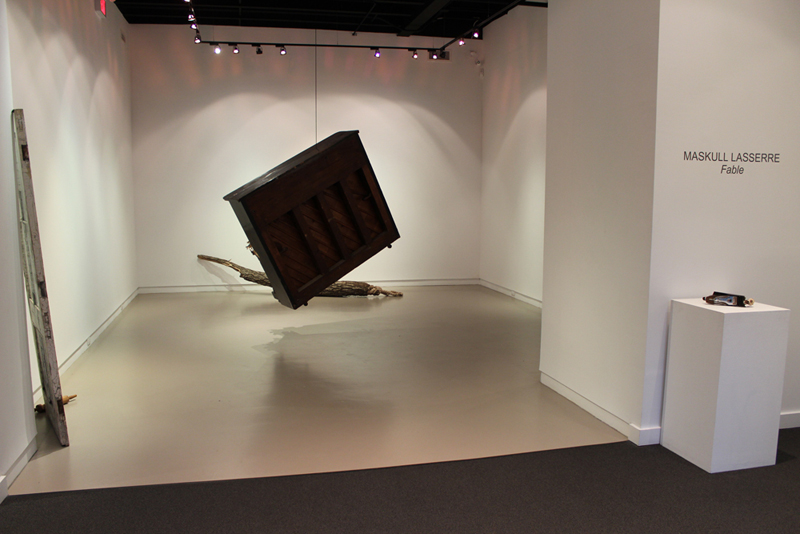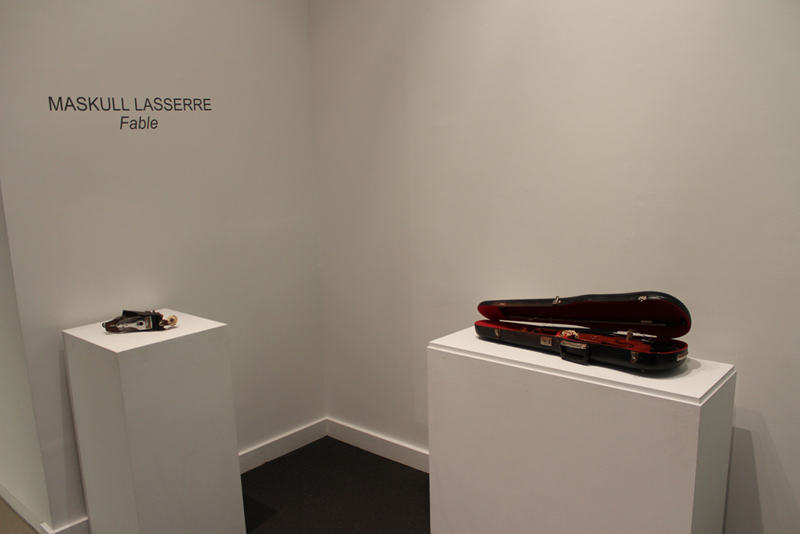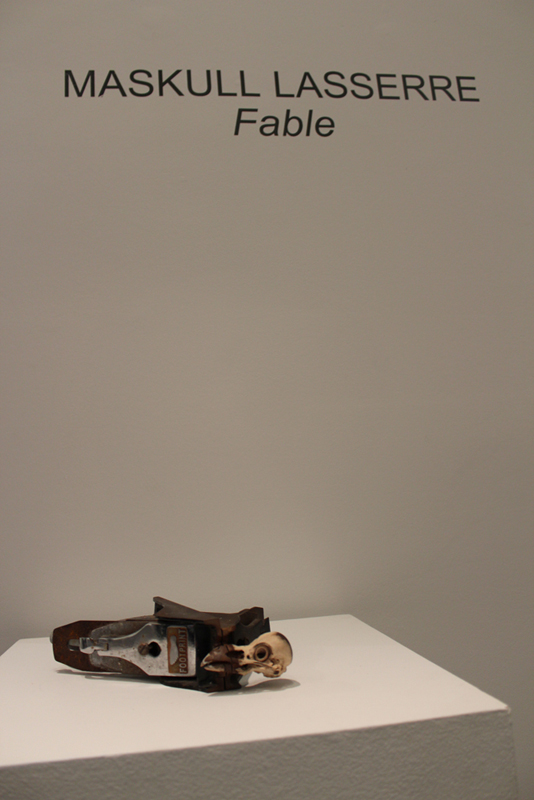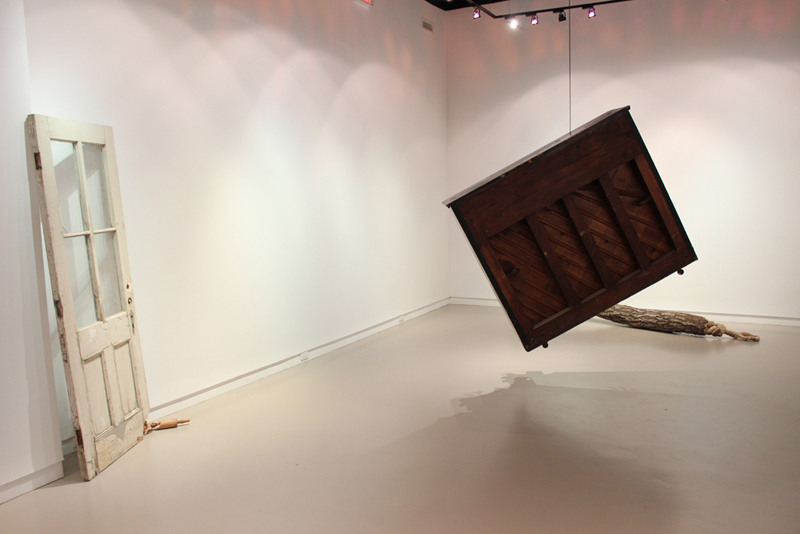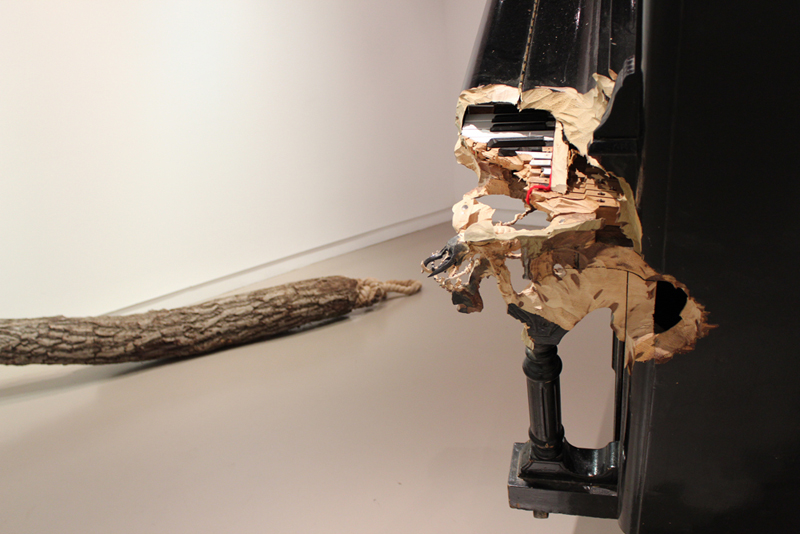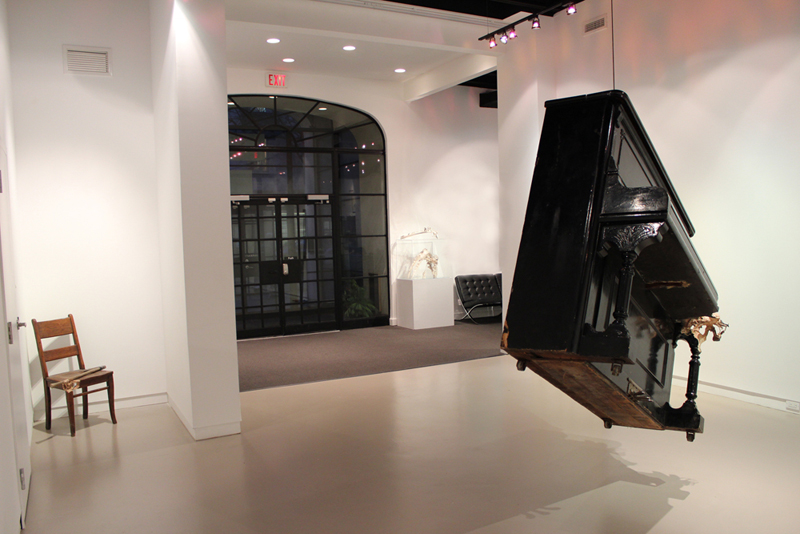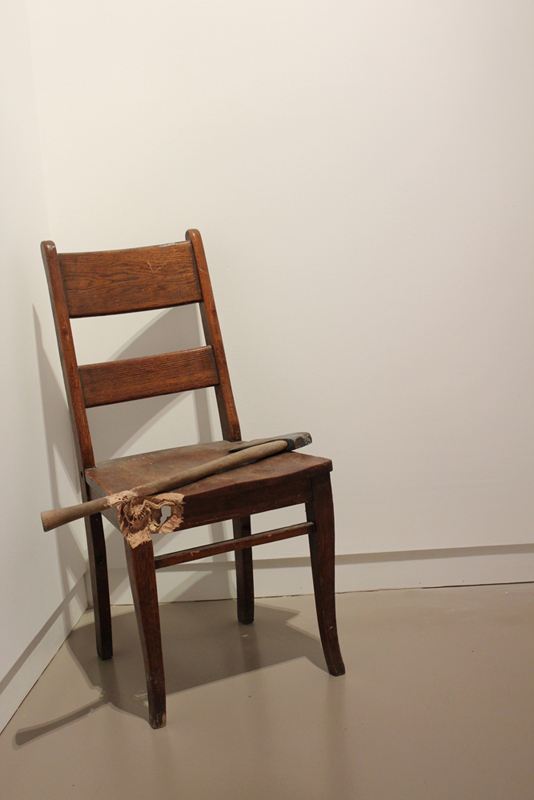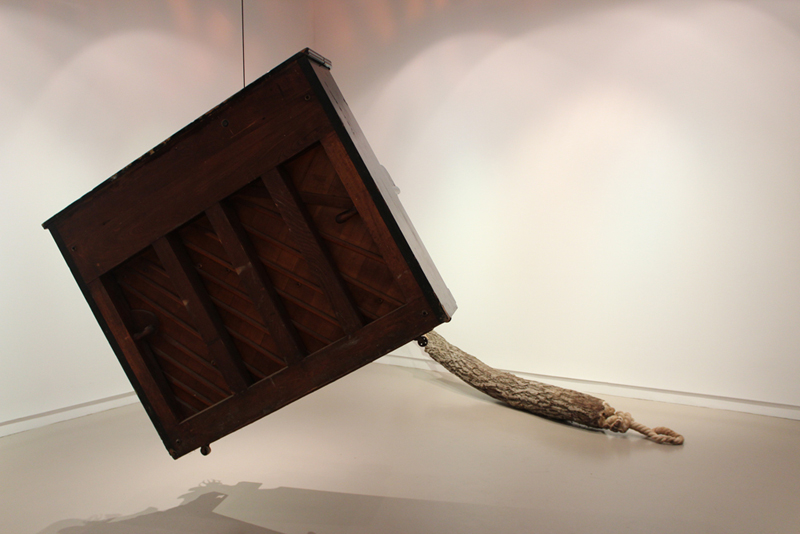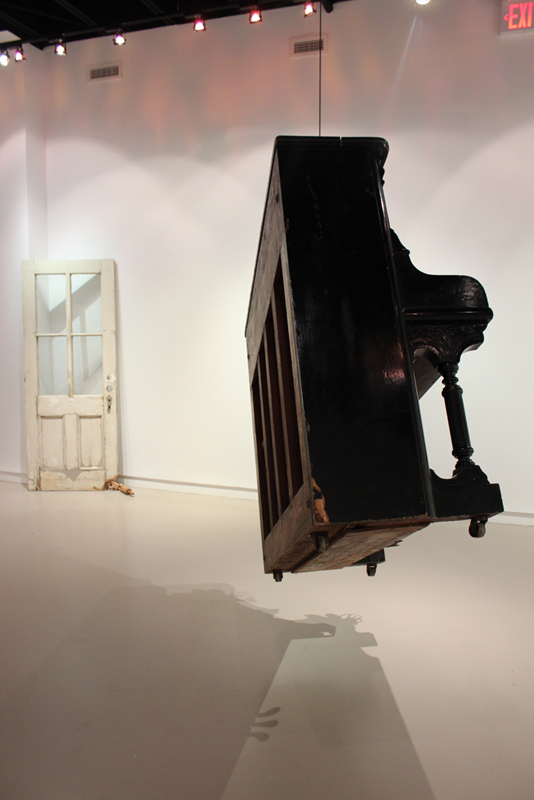Maskull Lasserre: Fable
December 1, 2012 – January 19, 2013
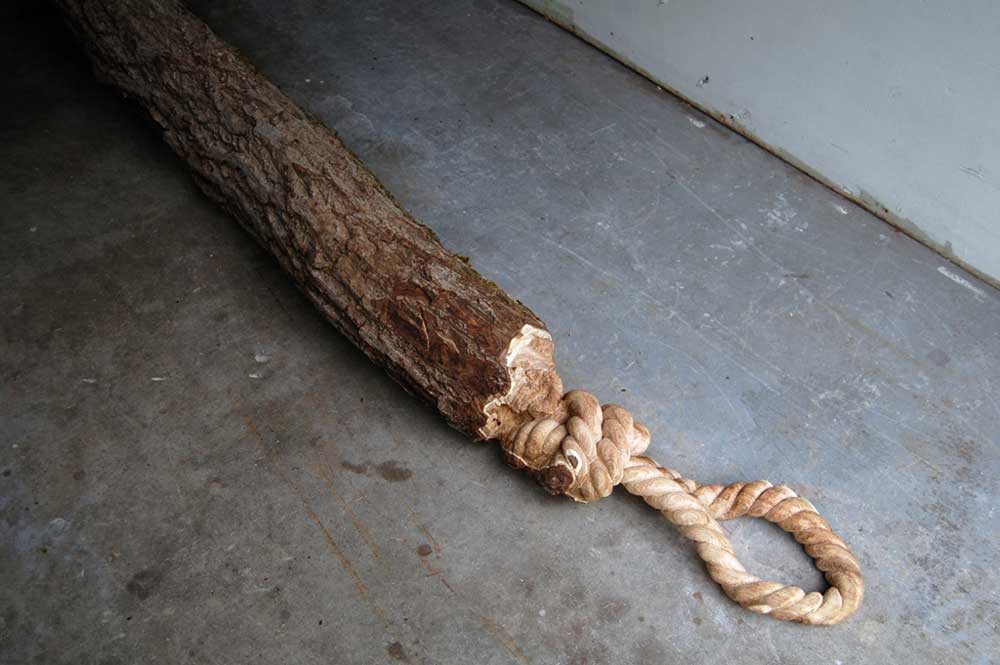
Pierre-François Ouellette art contemporain at Centre Space present new works by Maskull Lasserre. Check out the sculptor that was featured in Canadian Art magazine this Fall and highlighted last year in the Washington Post! All works are available at www.pfoac.com.
Fable was conceived as a collection of works unified by the common approach of material subtraction. The “image”, or representation revealed by this act was intended to both unify and activate the familiar objects into which they was carved. These carved subjects, exist as spectres – present as illusions of the missing matter, symptoms of an object that is – at once – less than what it used to be, and more. These are material metaphors, and the story that links the objects in syntactic verse; the fable.
By nature, carving is both an honest and a humble act. It has no secrets, no magic, and leaves no room for deceit. A carving always abides within the natural potential of its host, and can only exist by the material’s consent. The subtractive process has so much potential precisely because of its modest origins. When applied incisively, the technique manifests matter itself with a kind of thought. Carving’s strange alchemy turns the wood of its host into fictional substances of bone, rope, and carapace.
Behind the act is the intent. My approach is philosophical where each intervention is a line of interrogation into the nature of matter, its history, purpose, and potential. The image is a question that I ask of the object; the act of carving itself is a dissection aimed to discover the exact pathology of intent. Each of these works is a negotiation between matter and mind. Each the remnant of a conversation; a material dialectic between the maker and the made. They exist as evidence of a shared authorship between object and intent, effort and accident.
The choice of wooden objects of a certain vintage might suggest a kind of nostalgia or yearning for antiquity. The physical solidity of older objects is what suits them so well to being carved. Their history has not stopped in time, and participate in the everyday present just like any more recently manufactured good. The only distinction is that the extended histories of older objects earn them a kind of trustworthiness that is both exploited and subverted in the carved motifs that they concede. The history of these well worn things holds the potential for surprising outcomes. The jeopardy, animation, delicacy and decay, that has slept in the wood through all its prior use and purpose is revealed through my work. My hope is not to illustrate the details of incidental carved motifs, but to reveal the mystery, and the potential for risk and wonder that waits in the untouched wood.
Maskull Lasserre
Maskull Lasserre was born in Alberta in 1978, he lives and works in Montreal. He has a BFA from Mount Allison University (Visual Art and Philosophy), and an MFA from Concordia University (Sculpture). Lasserre’s sculptures and drawings explore the unexpected potential of the everyday through allegories of value, expectation, and utility. Elements of nostalgia, accident, humour, and the macabre are incorporated into works that induce strangeness in the familiar, and provoke uncertainty in the expected. Lasserre has exhibited across Canada and in the United States, most recently at the Museum of Art and Design, New York. He will participate in a group exhibition at the DePaul Museum in Chicago in January 2013. The artist’s work is in the collections of the Government of Canada (Transport Canada, DND), Canada Council for the Arts, and the City of Ottawa, amongst others.
——————————————-
Pierre-François Ouellette art contemporain est fier de présenter les nouvelles oeuvres de Maskull Lasserre. Nous vous invitons àdécouvrir les sculptures de ce jeune artiste qui a fait l’objet de l’attention de la revue Canadian Art cet automne et du Washington Post l’an dernier dans le cadre de sa première exposition personnelle à Toronto.
Fable a été conçu comme une collection d’œuvres unifiées par une approche de soustraction matérielle. Les « images », ou représentations, révélées par ce processus ont pour objet à la fois d’unifier et de réanimer les objets familiers dans lesquels elles ont été sculptées. Ces sujets sculptés sont des manières de spectres; ils sont présents en tant qu’illusions d’une matière manquante, et sont des symptômes d’un objet devenu à la fois moins et plus qu’il ne le fut. Ce sont des métaphores matérielles, et le récit syntaxique qui tisse des liens entre ces objets est une fable.
Par son essence même, la sculpture est un acte humble et honnête. Elle n’a ni secrets ni magie, et ne laisse aucune place à la déception. Une sculpture vit toujours au sein du potentiel naturel de son hôte, et ne peut exister que si la matière consent. Le processus de soustraction a un si grand potentiel précisément en raison de ses origines modestes. Lorsqu’appliquée de façon incisive, cette technique permet l’expression d’une matière « pensante ». L’étrange alchimie de la sculpture transforme le bois de son hôte en des substances fictives d’os, de corde et de carapace.
L’acte est le reflet de l’intention. Mon approche est philosophique, en ce sens que chaque intervention est une suite d’interrogations au sujet de la nature de la matière, de son histoire, de sa raison d’être, et de son potentiel. L’image est une question que je pose à l’objet; l’acte de sculpter lui-même est une dissection visant à découvrir la pathologie de l’intention. Chacune de ces œuvres est une négociation entre la matière et l’esprit. Chacune est le reste d’une conversation; une dialectique matérielle entre le créateur et le créé. Elles existent à titre de preuves d’une paternité partagée entre objet et intention, entre effort et accident.
Le choix d’objets en bois d’une certaine époque pourrait suggérer une sorte de nostalgie ou de désir de l’antique. La solidité physique des objets plus anciens est ce qui les rend si aptes à être sculptés. Leur histoire n’est pas figée dans le temps, et ils participent à notre quotidien actuel tout comme n’importe quel objet fabriqué plus récemment – la seule distinction étant que les couches d’histoires des objets plus anciens leur confèrent une fiabilité qui est à la fois exploitée et subvertie par leurs motifs sculptés. L’histoire de ces choses ayant si bien servicontient un potentiel de conclusions surprenantes. Le péril, l’animation, la délicatesse et la décomposition qui se sont logés dans le bois durant ses multiples usages précédents transparaissent désormais dans mon travail. Je ne cherche pas à illustrer les détails de simples motifs sculptés, mais bien de révéler le mystère, et le potentiel de risque et d’émerveillement que recèle le bois encore intact.
Maskull Lasserre est né en Alberta, au Canada en 1978. Il a passé une grande partie de son enfance en Afrique du Sud avant de revenir au Canada. Il détient un baccalauréat de l’Université Mount Allison (beaux-arts et philosophie) et une maîtrise en beaux-arts de l’Université Concordia (sculpture). Ses dessins et sculptures explorent le potentiel inattendu du quotidien à travers des allégories de la valeur, de l’attente, et de l’utilité. Des éléments de nostalgie, du hasard, de l’humour et du macabre sont incorporés dans ces œuvres induisant de l’étrangeté dans le familier et provoquant de l’incertitude dans nos attentes. Lasserre a exposé à travers le Canada et aux États-Unis. Ses oeuvres se retrouvent dans les collections permanentes du gouvernement du Canada (Transports Canada, les Forces canadiennes), du Conseil des arts du Canada et de la Ville d’Ottawa. Il a également participé au Programme d’arts des Forces canadiennes (PAFC) en Afghanistan. Il exposera en janvier 2013 au De Paul Art Museum à Chicago.
INSTALLATION:
